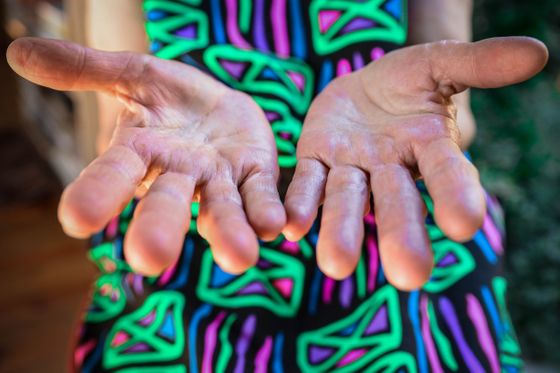A study of about 18,000 dogs found that the proportion of 'left-handed dogs' was much higher than that of humans

The effect of sex and age on paw use within a large sample of dogs (Canis familiaris) --ScienceDirect
https://www.sciencedirect.com/science/article/abs/pii/S016815912100085X
Findings from the Largest Study on Left-Handedness in Dogs | Psychology Today
https://www.psychologytoday.com/us/blog/the-asymmetric-brain/202104/findings-the-largest-study-left-handedness-in-dogs
That the dominant hand in animals other than humans are present have been known for a long time, the female is right-handed in the cat, the male is the trend of left-handed is seen research results in addition that there is, even in bees as 'right-handed' We know that there is a 'left-handed' difference. A research team led by Kirsty Laverack , a clinical ethologist at Lincoln University, conducted a study analyzing data from a large study of 17,901 dogs to determine the dominant hand of dogs.
The experimental data used in this survey was collected by the British Broadcasting Corporation (BBC) in a survey called 'Test Your Pet.' In this study, the owner prepared a cardboard or plastic tube wide enough to hold the dog's forefoot and placed the food in it. The dog needs to extend its forefoot into the tube to get food, and the owner checked which of the left and right forefoot the dog used to take out the food.
This experiment was repeated three times, and the owner said that the dog 'used the right forefoot in most cases (right-handed)', 'in most cases used the left forefoot (left-handed)', and 'preferred which one to use.' It was difficult to determine whether it was (ambidextrous) '.

As a result of the experiment, 13,240 dogs answered that they 'preferentially used either the left or right forefoot', and 74% of the dogs had either the left or right 'dominant foot'. Turned out. Of these, 58.3% were right-handed and the remaining 41.7% were left-handed. In the dog world, right-handed people are superior to left-handed people, while the proportion of left-handed people is much higher than that of humans.
Interestingly, the sex of dogs also affected the dominant foot, with 60.7% of females being right-handed and 39.3% being left-handed, while 56.1% of males being right-handed and 43.9% being left-handed. It is said that males had a larger proportion of left-handed people.
The results of this study show that dogs have the same difference between right-handed and left-handed as humans, but we also found that dogs have a much larger ratio of ambidextrous and left-handed than humans. It is unclear why the ratio of left-handed and ambidextrous is low in humans and high in dogs, but it is said that one factor may be that the dominant hand is corrected in early childhood due to cultural pressure in human society. In addition, the fact that the proportion of the dominant foot differs depending on the sex of the dog suggests that sex hormones may affect the dominant hand.

Related Posts:







